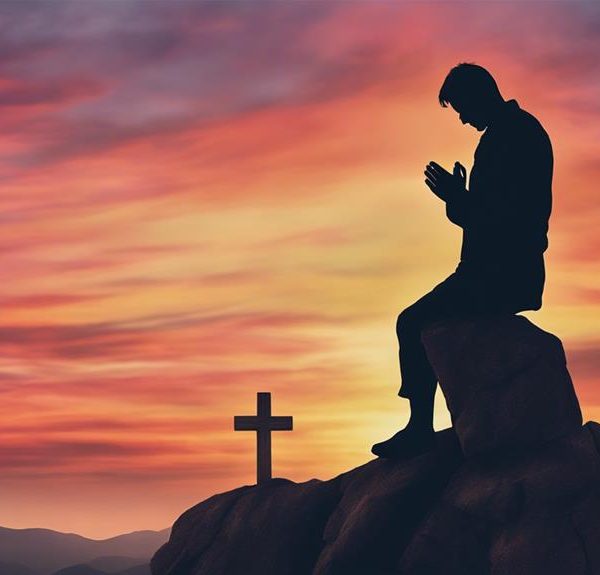Immerse yourself in biblical revivals, where ancient miracles reveal enduring lessons on transformation and the unyielding strength of faith.

Revival in the Bible Examples
Throughout history, the Bible has been a wellspring of miraculous revivals that could put any Hollywood screenplay to shame. You've likely heard tales of entire cities transforming overnight and societies being rebuilt from the ashes, but have you ever paused to ponder the depths of these narratives?
From Jonah's electrifying encounter in Nineveh to the spirit-fueled zeal of Pentecost, each story is a treasure trove of inspiration and insight. As you consider these examples, you might find yourself on the brink of uncovering timeless truths about change, resilience, and the power of faith.
Why stop now when the next revelation could be just around the corner?
Key Takeaways
- Divine warnings can lead to collective repentance and personal transformation, as seen in Jonah's message to Nineveh.
- Religious reforms, like King Josiah's, can purify practices and renew faith through a return to sacred texts and covenants.
- Leadership in times of crisis, exemplified by Nehemiah, is crucial for spiritual and community revival amidst challenges.
- Prophetic visions and divine interventions, such as Ezekiel's vision and the Pentecost, underscore hope and empower believers for renewal.
Jonah and Nineveh's Repentance

One notable example of revival in the Bible is found in the story of Jonah, where the city of Nineveh's widespread repentance demonstrates a profound transformation. At the heart of this narrative is a Divine Warning delivered by Jonah, despite his initial reluctance. This warning serves as a pivotal catalyst, prompting the city's inhabitants to re-evaluate their actions and moral compass. The response to Jonah's message isn't just collective but also deeply personal, showcasing an individual and communal willingness to change course.
The mechanism of this revival hinges on the concept of Personal Transformation. It's evident that the people of Nineveh internalize the divine admonition, leading to an immediate and sweeping reform in behavior. This change isn't superficial; it's rooted in a genuine recognition of wrongdoing and a sincere commitment to amendment. The narrative poignantly illustrates how divine warning can instigate a profound personal and societal transformation, bridging the gap between imminent destruction and redemption.
Through Jonah's story, the Bible encapsulates the potential for renewal and change, highlighting that revival is as much about internal transformation as it's about outward actions and societal reform.
King Josiah's Reforms

Another pivotal example of biblical revival is observed in the transformative reforms initiated by King Josiah, which profoundly reshaped the spiritual landscape of Judah. At a young age, Josiah inherited a kingdom steeped in idolatry and spiritual neglect. His reforms, however, marked a significant turning point, steering Judah back towards adherence to divine statutes.
Key aspects of Josiah's reforms include:
- Temple purification: Josiah ordered the removal of all idolatrous artifacts from the Temple, restoring its sanctity as a place of worship dedicated solely to Yahweh.
- Law rediscovery: The finding of the Book of the Law in the Temple sparked a national religious renewal, as Josiah committed to observing its commands and decrees.
- Covenant renewal: The king led Judah in renewing their covenant with Yahweh, pledging to follow His laws with all their heart and soul.
- Destruction of idolatrous sites: Josiah systematically destroyed altars, shrines, and images dedicated to other deities throughout the kingdom, affirming monotheism.
Through these actions, King Josiah not only purged Judah of its idolatrous practices but also reestablished the nation's covenantal relationship with Yahweh. His reforms serve as a testament to the power of spiritual revival and the restoration of divine worship.
Nehemiah Rebuilds Jerusalem

Following King Josiah's reforms, the narrative of biblical revival continues with Nehemiah's mission to rebuild Jerusalem, highlighting another crucial moment of spiritual and physical restoration for the Jewish people. Nehemiah's endeavor centered on wall construction, a task that symbolized not just the physical security of Jerusalem but also the spiritual recommitment of its inhabitants to their covenant with God. This undertaking wasn't merely about bricks and mortar; it was a monumental effort to fortify faith and identity amidst the ruins.
Nehemiah faced significant leadership challenges throughout this process. He had to navigate opposition from neighboring territories, internal dissent, and the immense logistical hurdles of coordinating such an extensive project. His leadership style—marked by prayer, strategic planning, and an unwavering commitment to his cause—serves as a testament to the complexities of guiding a community through restoration. Nehemiah's story reminds us that revival often requires overcoming substantial obstacles, both from external sources and within one's own ranks.
This period of wall construction and the resolution of leadership challenges marks a pivotal chapter in the history of the Jewish people, underscoring the resilience and faith required to rebuild not just physical structures but the very soul of a community.
Ezekiel's Vision of Renewal

Amidst the narrative of biblical revival, Ezekiel's vision stands out as a profound symbol of spiritual renewal and restoration for the Jewish nation. This vision, rich in prophetic imagery and valley symbolism, offers a multifaceted look into the process of divine restoration.
Analyzing this vision, several key elements emerge:
- Valley Symbolism: The valley, often a metaphor for death or despair, becomes the stage for an extraordinary act of divine intervention, illustrating the depth from which God can revive and restore.
- Prophetic Imagery: Ezekiel's detailed description of the dry bones receiving life serves as a powerful image of revival, symbolizing the reanimation of Israel's spiritual life.
- Divine Breath: The breath of God in Ezekiel's vision represents the divine source of life and revival, emphasizing that true restoration comes only from the divine.
- National Restoration: Beyond individual renewal, the vision symbolizes the restoration of Israel as a nation, highlighting God's promise to reunite and restore His people.
Ezekiel's vision encapsulates a profound message of hope and renewal, demonstrating that even from the depths of despair, revival is possible with divine intervention.
The Pentecost Transformation

Moving from the Old Testament's vivid imagery of revival in Ezekiel's vision, we now examine the transformative event of Pentecost, marking a pivotal moment in the early Christian church. This occasion, chronicled in the Acts of the Apostles, depicts the descent of the Holy Spirit upon the apostles and other followers of Jesus Christ. You'll find that this event wasn't merely a miraculous display but a catalyst for the widespread dissemination of the Gospel through Apostolic preaching.
The Holy Spirit's empowerment of the apostles signifies an essential shift from Old Testament prophetic messages to a new era of direct divine intervention and guidance. This empowerment enabled the apostles to preach in various languages, reaching diverse audiences, thus emphasizing the inclusivity of the Christian message. The phenomenon of Apostolic preaching, initiated at Pentecost, set a precedent for the dynamic spread of Christianity, underscored by miracles, healings, and profound teachings.
Analyzing the Pentecost transformation, you'll recognize it as a fulcrum in Christian history. The Holy Spirit's arrival equipped the early church with unprecedented spiritual gifts, fostering a community characterized by unity, fervent prayer, and communal sharing. This event underscores the essential role of the Holy Spirit in energizing and guiding the church's mission, making Pentecost a cornerstone of Christian revival and transformation.
Frequently Asked Questions
How Do Modern Theologians Interpret the Concept of Revival in Contemporary Religious Practices Compared to Biblical Examples?
You're exploring how modern theologians view revival in today's religious practices versus ancient texts. They blend theological perspectives with contemporary relevance, analyzing shifts in societal beliefs and technological advances.
You'll find they often argue that while core spiritual awakenings remain constant, the methods and expressions of these revivals have evolved.
This analysis offers a deeper understanding of revival's role in both historical and modern faith communities, highlighting its enduring significance.
What Are the Psychological and Sociological Impacts of Religious Revivals on Communities, as Evidenced Outside the Specific Examples of Jonah, Josiah, Nehemiah, Ezekiel, and Pentecost?
You're exploring how religious revivals impact communities beyond historical biblical events. These phenomena significantly enhance community cohesion, creating a strong sense of unity and shared purpose.
Additionally, you'll find mental health shifts, with individuals experiencing increased hope, purpose, and often, reduced feelings of isolation.
Analyzing these effects requires a scholarly, objective lens, focusing on the broader psychological and sociological changes that occur within communities experiencing revival.
Can the Principles of Revival Seen in the Bible Be Applied to Interfaith or Non-Religious Contexts for Community Rejuvenation and if So, How?
Certainly, the principles of revival can be adapted to interfaith dialogues and non-religious settings for community rejuvenation. By focusing on shared values, such as compassion, justice, and mutual respect, these principles foster cultural renewal and bridge divides.
Engaging in open, respectful conversations allows diverse communities to find common ground, collaborate on shared goals, and create a collective sense of purpose, leading to a stronger, more united community.
How Have Historical Revivals Outside of the Biblical Context (E.G., the Great Awakenings) Been Influenced by or Contrasted With the Examples of Revival Found in the Bible?
You're exploring how historical revivals, like the Great Awakenings, relate to biblical revival examples. These movements often serve as cultural reflections, revealing societies' desires for spiritual renewal.
Through historical interpretation, you'll find that while they draw inspiration from biblical narratives, they also adapt to their contexts, showcasing contrasts in methods and impacts.
This analysis highlights the dynamic interplay between religious texts and the societal push for rejuvenation.
In What Ways Have Art, Literature, and Music Been Influenced by the Theme of Revival and Transformation as Depicted in Biblical Narratives Beyond the Stories of Jonah, Josiah, Nehemiah, Ezekiel, and Pentecost?
You'll find that themes of revival and transformation have deeply influenced art, literature, and music.
Literary motifs often draw on these themes to explore human experiences of renewal, mirroring the profound transformations seen in biblical narratives.
Similarly, musical compositions frequently incorporate elements of revival, using them to convey powerful messages of hope and change.
This rich interplay highlights the enduring impact of these themes across various creative expressions.
Conclusion
In conclusion, these biblical examples illustrate pivotal moments of renewal and transformation, emphasizing the potency of repentance and the capacity for spiritual awakening. From Jonah's success in Nineveh to the Pentecost's profound impact, they underscore the recurrent theme of divine intervention in catalyzing societal rebirth.
Analyzing these narratives reveals a deeper understanding of the dynamics of revival, offering insights into the mechanisms of change and the enduring human aspiration for spiritual renewal and moral rectitude.



Sign up